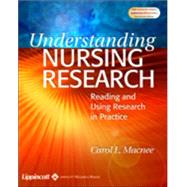
Note: Supplemental materials are not guaranteed with Rental or Used book purchases.
Purchase Benefits
What is included with this book?
|
1 | (16) | |||
|
2 | (1) | |||
|
3 | (9) | |||
|
12 | (1) | |||
|
13 | (3) | |||
|
16 | (24) | |||
|
18 | (12) | |||
|
30 | (8) | |||
|
38 | (2) | |||
|
40 | (15) | |||
|
|||||
|
41 | (1) | |||
|
42 | (5) | |||
|
47 | (4) | |||
|
51 | (2) | |||
|
53 | (2) | |||
|
55 | (22) | |||
|
|||||
|
56 | (2) | |||
|
58 | (14) | |||
|
72 | (2) | |||
|
74 | (1) | |||
|
75 | (2) | |||
|
77 | (24) | |||
|
|||||
|
78 | (2) | |||
|
80 | (3) | |||
|
83 | (1) | |||
|
84 | (10) | |||
|
94 | (1) | |||
|
95 | (1) | |||
|
96 | (2) | |||
|
98 | (1) | |||
|
99 | (2) | |||
|
101 | (24) | |||
|
|||||
|
102 | (9) | |||
|
111 | (3) | |||
|
114 | (2) | |||
|
116 | (3) | |||
|
119 | (1) | |||
|
120 | (1) | |||
|
121 | (4) | |||
|
125 | (21) | |||
|
126 | (9) | |||
|
135 | (3) | |||
|
138 | (3) | |||
|
141 | (1) | |||
|
142 | (4) | |||
|
146 | (33) | |||
|
|||||
|
147 | (8) | |||
|
155 | (2) | |||
|
157 | (6) | |||
|
163 | (3) | |||
|
166 | (8) | |||
|
174 | (1) | |||
|
175 | (1) | |||
|
176 | (3) | |||
|
179 | (32) | |||
|
|||||
|
180 | (9) | |||
|
189 | (6) | |||
|
195 | (7) | |||
|
202 | (4) | |||
|
206 | (1) | |||
|
207 | (4) | |||
|
211 | (21) | |||
|
|||||
|
212 | (2) | |||
|
214 | (5) | |||
|
219 | (7) | |||
|
226 | (2) | |||
|
228 | (1) | |||
|
228 | (4) | |||
|
232 | (21) | |||
|
|||||
|
233 | (12) | |||
|
245 | (2) | |||
|
247 | (2) | |||
|
249 | (1) | |||
|
250 | (3) | |||
|
253 | (20) | |||
|
254 | (2) | |||
|
256 | (3) | |||
|
259 | (1) | |||
|
260 | (2) | |||
|
262 | (1) | |||
|
263 | (3) | |||
|
266 | (7) | |||
| Appendix A-1: Risk Factors for Cardiovascular Disease in Children With Type I Diabetes | 273 | (9) | |||
| Appendix A-2: Fecal Incontinence in Hospitalized Patients Who Are Acutely III | 282 | (9) | |||
| Appendix A-3: Homeless Patients' Experience of Satisfaction With Care | 291 | (8) | |||
| Appendix A-4: Evaluating the Impact of Peer, Nurse Case-Managed, and Standard HIV Risk-Reduction Programs on Psychosocial and Health-Promoting Behavioral Outcomes Among Homeless Women | 299 | (13) | |||
| Appendix A-5: Mexican American Family Survival, Continuity, and Growth: The Parental Perspective | 312 | (10) | |||
| Appendix A-6: Factors Associated With Participation by Mexican Migrant Farmworkers in a Tuberculosis Screening Program | 322 | (11) | |||
| Appendix A-7: Trajectory of Certain Death at an Unknown Time: Children With Neurodegenerative Life-Threatening Illnesses | 333 | (10) | |||
| Appendix A-8: Distress and Growth Outcomes in Mothers of Medically Fragile Infants | 343 | (14) | |||
| Appendix A-9: Exercise in Heart Failure: A Synthesis of Current Research | 357 | (13) | |||
| Appendix A-10: Effect of Positioning on SvO2 in the Critically III Patient With a Low Ejection Fraction | 370 | (9) | |||
| Appendix B: Fictional Article: Demographic Characteristics as Predictors of Nursing Students' Choice of Type of Clinical Practice | 379 | (5) | |||
| Appendix C: Historical Analysis of Siderail Use in American Hospitals | 384 | (6) | |||
| Appendix D: Sample In-Class Data Collection Tool | 390 | (2) | |||
| Appendix E: In-Class Study Data for Practice Exercise in Chapter 5 | 392 | (2) | |||
| Glossary | 394 | (12) | |||
| Index | 406 |
The New copy of this book will include any supplemental materials advertised. Please check the title of the book to determine if it should include any access cards, study guides, lab manuals, CDs, etc.
The Used, Rental and eBook copies of this book are not guaranteed to include any supplemental materials. Typically, only the book itself is included. This is true even if the title states it includes any access cards, study guides, lab manuals, CDs, etc.